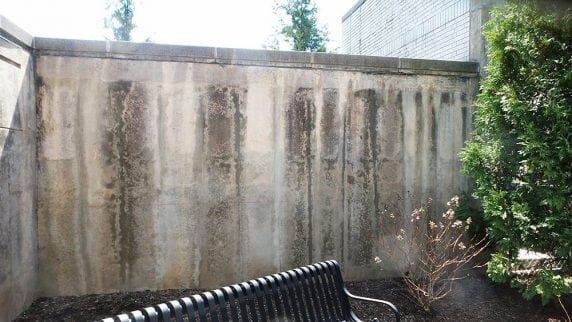New Yorker Mary Lowengard, treated at The Hartford HealthCare Cancer Institute at Hartford Hospital, launches effort to transform view for infusion center patients.
[huge_it_gallery id=”50″]
The Lowengard family cancer odyssey began the afternoon of Sept. 13, 2016. I was heading north on I-91 from New York City to Hartford to accompany my mother to a doctor’s appointment when I was pulled over in Wethersfield for allegedly texting while driving.
Four hours later, I had better (or worse, as it turned out) things to worry about. My 87-going-on-37-year-old mother, who had been feeling unwell in a vague, yet ominous way throughout the summer, was told she had a knobby growth in her abdomen. A call to my mother’s gynecologist was recommended. My mother had fluid in her belly, was having difficulty breathing and was uncharacteristically uninterested in food. It was this last symptom that alarmed the family the most: she had never not been interested in food.
Within a few days my mother had signed on with a gynecological oncologist, Dr. Heather Einstein, who confirmed a diagnosis of Stage IIIc ovarian cancer and scheduled her for the first of seven rounds of chemo (the standard six, plus one to grow on). We established a working relationship with Hartford Hospital and its many incarnations: the MOB (Medical Office Building, no association to La Cosa Nostra), the High building and its second-floor radiology department, the Conklin Wing and the Hartford HealthCare Cancer Institute at Hartford Hospital.
I learned to navigate the maze of tunnels and skywalks that connected these buildings and, importantly, figured out the shortest distance to Starbucks and how to sweet talk the valets into leaving our car in the hospital-adjacent lot.
I moved into my sister’s bedroom at my childhood home where my mother and one of my brothers still resided. I hadn’t been back much in the last 45 years, just for the obligatory holidays, birthdays, anniversaries and funerals. I brought my laptop and my cat, abandoning my apartment in New York. I put my MBA to the test, organizing support (my five siblings, my 30-something niece and a phalanx of my mother’s friends, supplemented by a fabulous new housekeeper and Hartford Healthcare at Home nurses, aides, physical and occupational therapists). I managed a complex calendar of home economics and treatment-related activities, installed a hospital bed and stair glide, and tried not to get lost on New Britain Avenue.
By Thanksgiving, my mother had finessed three rounds of chemo and was deep into the third season of The Good Wife. No fewer than 20 members of the family descended for the holiday. On Black Friday, we learned that a norovirus had vanquished our next door neighbors just as their turkey was coming out of the oven. My niece’s kids had been playing over there. By Saturday, five-year-old Milo was feeling punky – and so was I.
The following Monday I flew to Atlanta on assignment, still queasy, believing I had an aggravated gall bladder. When I returned to Hartford I drove myself to the Hartford Hospital ER and landed, eventually, in a bed on the 12th floor.
After tests, test and more tests, I was sprung five days later. Then Dr. Einstein called. Diagnosis: ovarian cancer, stage IIIc. Déjà vu all over again. What were the chances? Apparently, not as slim as I might have hoped. Subsequent investigations revealed no genetic predisposition. It was just one of those funny coincidences. Well, not all that funny.
My mother blazed a wide trail for me over the previous three months and I was well prepared for what lay ahead. Her surgery had been put off initially as she was deemed too fragile; mine was postponed when I developed pulmonary embolisms. I was invited to show up for weekly chemo. The Wednesday before Christmas I reported to the Cancer Institute, settled into a window chair and stuck my arm out. I knew the drill. This wasn’t my first rodeo.
My mother’s surgery was in early 2017; chemo resumed at the end of January. We had our first mother-daughter session sitting side-by-side again three weeks later. Three weeks after that, March 9, was my mother’s final infusion. We celebrated with two cakes and Martinelli’s sparkling cider.
By this time I had watched the passing of three seasons: the end of summer, then fall and winter, framed by the picture windows of our assigned treatment rooms. The garden provided a bit of greenery but the drab grey concrete wall that defined the space annoyed me. It was prison-like and confining. I fantasized breaking out of my lounge chair, pushing through the emergency door and throwing a bucket of paint on the wall.

But I had a better idea.
What if I found a way to raise the funds to transform the wall? This notion festered throughout the winter. The day before my surgery, I punched out an email to a Dr. Peter Yu, Physician-in-Chief of the Hartford HealthCare Cancer Institute, whose name I pulled off the hospital website. He responded within two hours – and the Great Gray Wall project was born.
Backed by a consortium of doctors and administrators championing the project, we are launching a campaign to raise the funds to clean and prep the wall, and commission West Hartford-raised Brooklyn artist Sally Mara Sturman to paint it with a whimsical garden scene that will bloom all year.
On June 7, Dr. Einstein called to say my cancer had subsided and there would be no more treatments. But I’m sticking around for the summer to watch the the garden grown on the wall outside the infusion center.
By the way, I pled Not Guilty to the ticket, and it was dismissed.
— Mary Lowengard
Editor’s Note (Nov. 17): New Yorker Mary Lowengard, treated at The Hartford HealthCare Cancer Institute at Hartford Hospital, launched an effort to transform the view of infusion center patients by bringing color and life to a rundown gray wall outside the windows. The Hartford Hospital Auxiliary was so touched by the story that it donated $50,000 to complete Phase I of the project, a monthlong effort on the three walls of the rear garden facing most of the transfusion rooms. The artists have packed up their paintbrushes for the winter, but the front garden is scheduled for beautification in Phase II that will start in the spring.
“For 27 years,” says Lowengard, “Hartford Hospital patients being treated at the Infusion Center have stared at an ugly wall. Next year, it’s anticipated the Center will have 10,000 patient visits (double this year due to the annexation of the new wing). And these patients have doctors and nurses and caregivers and families attending to them. This helped make their lives better.”
The Auxiliary is now seeking donations for the next phase of the project, the front garden, scheduled to begin next spring.
Will you help our “garden” grow? Please visit https://giving.harthosp.org/graywall.

